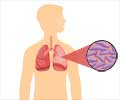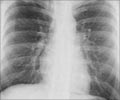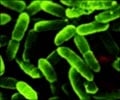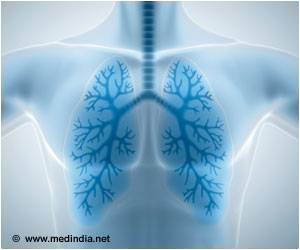Signals sent to the gut to temporarily increase the diversity of bacteria in specific part of digestive tract, when TB infection in the lungs triggers the immune system in mice.

The finding was also replicated using a different strain of the TB microbe, suggests a report on the work in the May 12 issue of the online journal PLOS One.
Study leader Kathryn Winglee, a Ph.D. student working at the Johns Hopkins Center for Tuberculosis Research, says the finding is important, because it could lead to improved diagnosis of TB, a disease that infects one-third of the world's population and in 2010 caused 1.4 million deaths.
"The fact that the bacterial populations change in the gut means that we can begin to use this observation for TB diagnosis," Winglee says. "TB diagnosis is currently challenging, but a simple stool sample test that detects changes in the diversity of gut bacteria after TB infection in the lung might improve diagnosis."
The finding also adds to growing evidence that the various parts of the immune system found in mucous membranes throughout the body interact as a "global" organ rather than work as separate, individual sites of immune function. Mucous membranes are the moist linings of areas of the body exposed to the environment, such as the nostrils, mouth, lungs, genitals and intestinal tract. These membranes form a protective barrier against infection and contain immune system cells.
Gut microbes have a complex relationship with the immune system, according to Winglee. For example, individuals with arthritis, type 2 diabetes, asthma and certain other diseases have specific changes in the populations of their fecal bacteria compared to healthy people, she explains. "However, there have been very few studies focused on changes in gut bacteria in response to TB infection, especially in individuals whose gut bacterial diversity hasn't already been artificially affected by antibiotics," she says.
For example, the relative abundance of a different species of bacteria belonging to two families — higher-level groups that contain various species — called Lachnospiraceae and Ruminococcaceae were higher before TB infection; they were also higher in uninfected mice. Other changes in populations of various species of gut bacteria also contributed to a decrease in diversity, as some bacteria become more prevalent while the population of others dwindled.
Very little is known about the effects of specific gut microorganisms in humans, according to Winglee. So finding that there is a significant loss of diversity of gut bacteria with TB infection is a critical step in understanding some of the events that occur during this disease, as well as the role of the mucosal immune system, she says.
"We often think of each part of the mucosal immune system, such as the lungs and gut, to be separated," Winglee notes. "However, the fact that an aerosol infection causes such rapid changes in the gut suggests that the various parts of the mucosal system throughout the body actually function in some way like a single organ."
Source-Eurekalert
 MEDINDIA
MEDINDIA




 Email
Email










